BMW TPM Malfunction TPMS Inactive
Is the Tire Pressure Warning Light on your BMW illuminated? Follow the procedures shown below to learn how to rectify the concern. The tire pressure monitoring system is designed to alert the driver when tire pressure is too low. The tire pressure warning light illuminates when air pressure is 20% below the recommended pressure; ensure the tires are inflated to the correct pressure to properly reset the TPMS light.

When a BMW detects a flat tire, the TPM or TPMS light (yellow tire symbol with exclamation mark) and a warning message on the Drive Display, along with an audible sound, warn the driver of low tire pressure. If the TPM or TPMS light flashes, it means the tire monitoring system is malfunctioning.
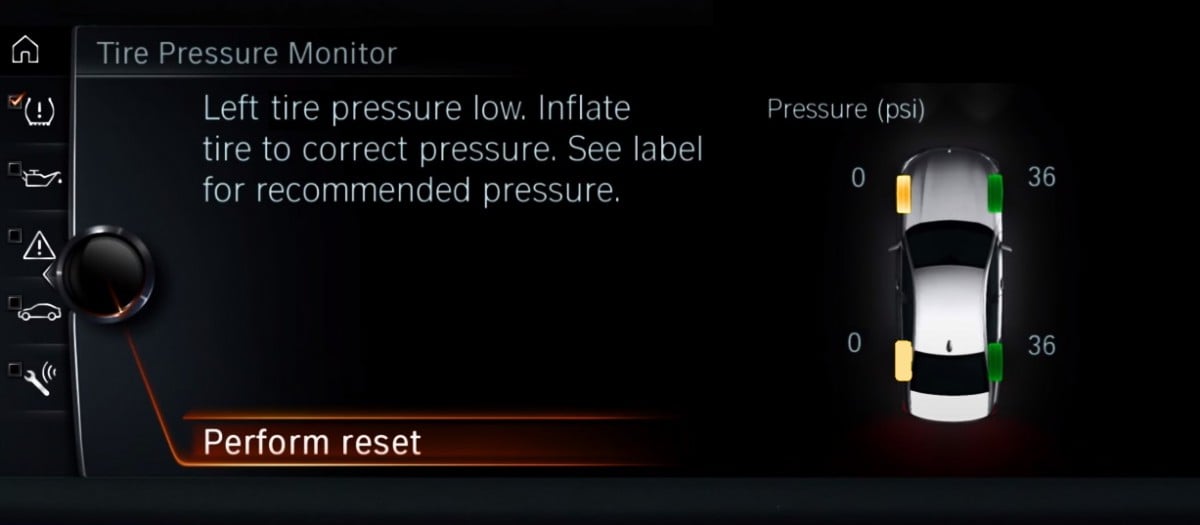
The tire pressure monitor system warning will activate if the system recognizes a 20% tire pressure loss and informs the driver that the tire is getting low. On a BMW, this system may also be called Flat Tire Monitor or FTM. If the tire pressure is correct, you may be getting a TPM malfunction or inactive errors because:
- The TPMS sensor is defective.
- The RDC module is faulty.
- External interference
What to do?
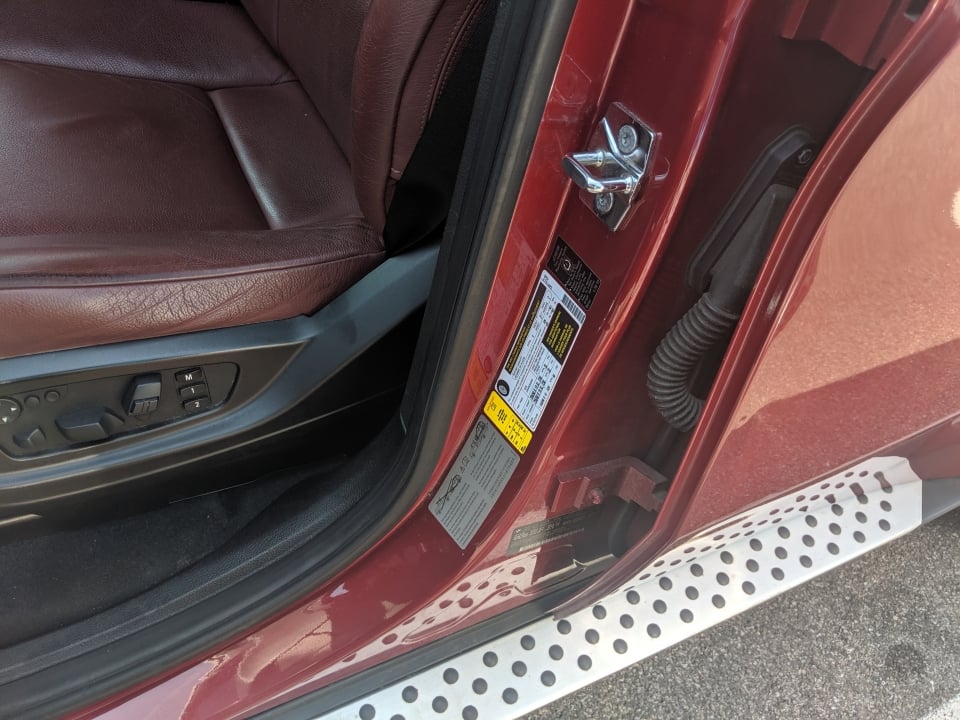
If the tire warning message appears on the IPC, you must first pull off the road. Ensure that your tires are not flat and that none are punctured. If the pressure loss is minimal, go to the nearest fuel station, use the air compressor, and inflate your tires to the recommended pressures.
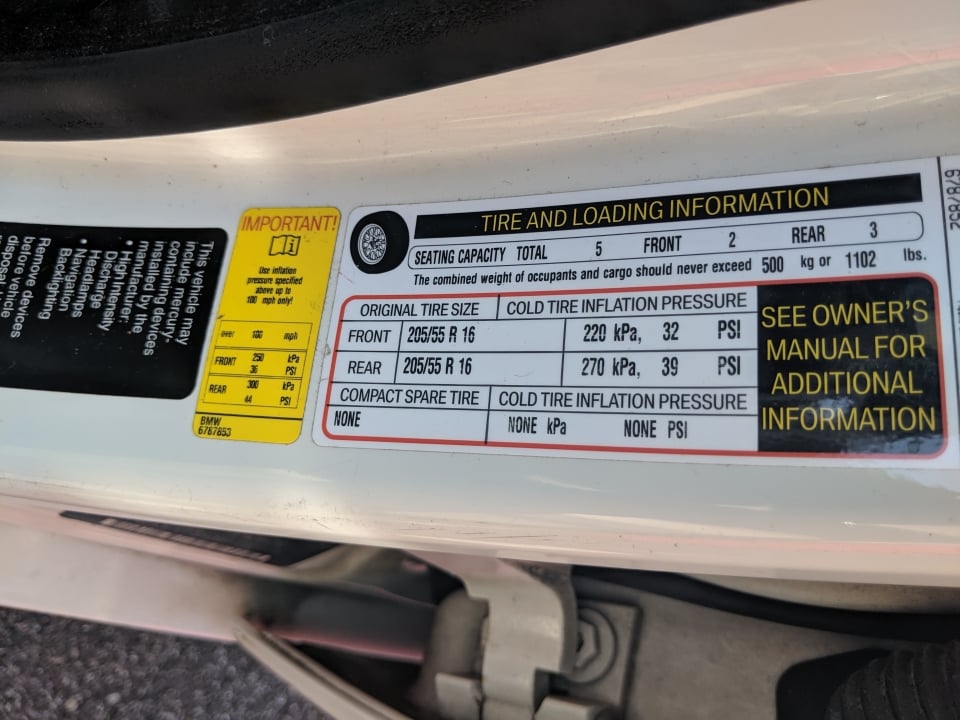
Add air in all the tires up to the specified air pressure. You can check the recommended tire pressure label on the driver’s door frame or behind the gas cap. The typical BMW tire pressure is 32-36 PSI. Low-profile tires may require up to 45 PSI.
Reset BMW TPM warning.
The next step is to reset the TPM warning.
- Inflate the tires to the recommended tire pressure. Typically, 36 PSI.
- Press the iDrive knob to select vehicle settings.
- Scroll down to Vehicle Tires using the iDrive knob.
- Rotate the iDrive knob to select the TPM menu.
- Select Reset, then press the iDrive knob.
- Select YES. The status should change to Resetting TPM.
- After a short drive, the Status should change to TPM Active.
Because of various transportation acts, a TPM system is mandatory for all new cars sold in the United States after September 2007. So, all BMW cars from 2008 have a TPM system installed from the factory, regardless of the model and equipment level.
How does BMW TPM work?
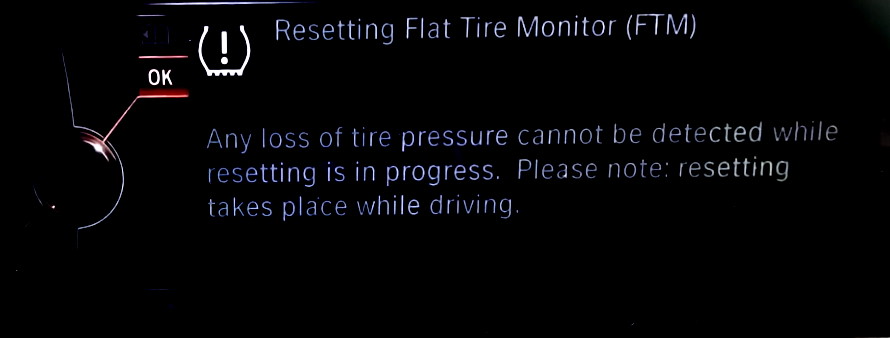
The TMP has pressure sensors that are part of the tire valve on each wheel, and a control unit ( also known as RDC, TPM, or TPMS receiver) is installed in the vehicle. This system monitors each individual tire pressure and notifies the driver when it becomes much lower than the recommended specification. Proper tire pressure (typically 32-36 psi) will ensure the best performance, fuel economy, and extended tire life.
Common Problems
If the TPM, TPMS, or FTM light is flashing on a BMW, the tire monitoring system has been disabled due to one of the following problems:
Defective RDC Transmitter
With generation 1 or 2 TPM systems, older BMW models have a sensor within the tire and a transmitter in each wheel well, hidden behind the underlined. Transmitters pick up the sensor signal and send it to the central control unit. In most cases, a transmitter can go bad, causing a communication breakdown. It is also possible for a reception antenna in the control unit to fail.
Water Damage
Newer BMW models, equipped with generation 3 or later TPM systems, use a more simplified system. With no wheel transmitters, wheel sensors combined with a single control unit with an integrated antenna are the only components. Depending on the model year, the control unit is mounted on the chassis, which exposes the elements. As a result, moisture enters the casing, causing corrosion on sensitive electronic components. Although sealed, the control unit can be opened with little effort. Clean any traces of corrosion, which are green in most cases.
The BMW tire pressure module (A85a) may be installed under the spare tire or the dashboard on the driver’s side. A common problem with the BMW tire pressure system is when the RDC module is installed under the spare tire on the trunk floor. Water can build up under the spare tire, damaging the module or corroding the contacts.
TPM Fuse
Lastly, check the TPM fuse, which can burn if the control unit shorts out. In most models, this fuse is located in the junction box behind the glove compartment.
TPM Sensor Battery

A sensor within each tire gives information about the air pressure. The sensor has a lithium-ion battery, which drains out with time. In most cases, OEM batteries can last up to ten years. Mechanical damage, which can happen during tire fitment, is another possibility. Most tire shops have wireless readers to verify if the sensor emits a signal.
Possible Error Messages
- Tire Pressure Monitor TPM for the detection of flat tires is currently unavailable. Don’t hesitate to get in touch with the nearest BMW.
- TPM Status: TPM Malfunction
- Tire Pressure Monitor (TPM) malfunction:
- The system is unable to detect tire pressure loss
- Check tire pressure manually.
- Continued driving is possible.
- Consult service center
- Tire Pressure Monitoring malfunction: Drive moderately. The system is unable to detect tire pressure loss. Consult service center.
- TPM Inactive warning light on the dashboard.
- Tire pressure monitor reset: System inactive and unable to detect pressure loss for up to 12 minutes. Reset only occurs while driving.
- Low tire pressure. Stop carefully. You can continue driving with max for Run Flat tires with the “RSC” symbol. 50 mph (80 km/h).
Diagnose BMW TPM System
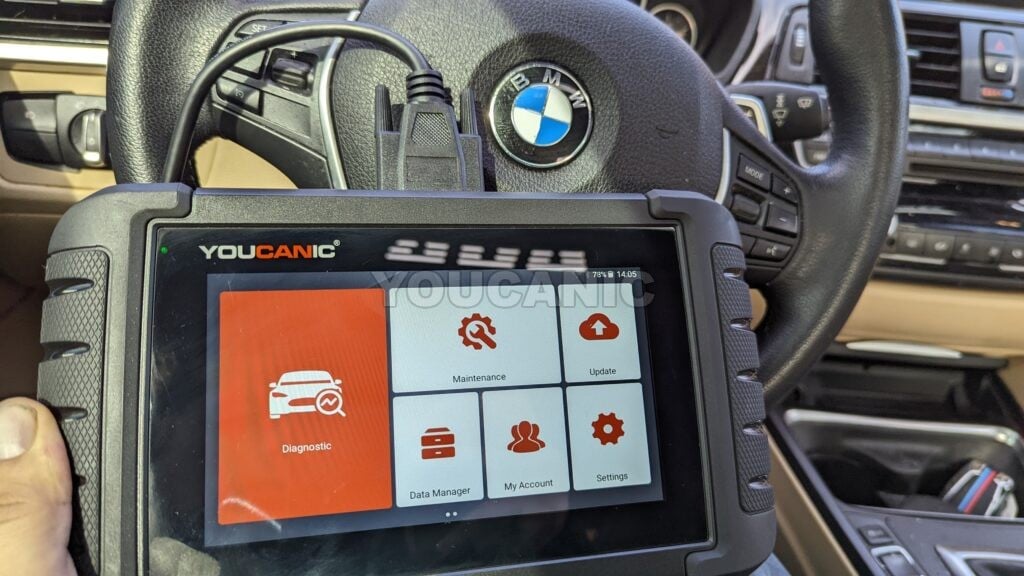
You will need a YOUCANIC Full System Scanner to read and clear BMW-specific fault codes and diagnose a BMW tire system malfunction. Generic OBD-II scanners won’t be able to read BMW TPM fault codes such as:
- 604E RDC System Malfunction
- 6050 RDC Transmitter, front right
- 6055 Wheel electronics, front right
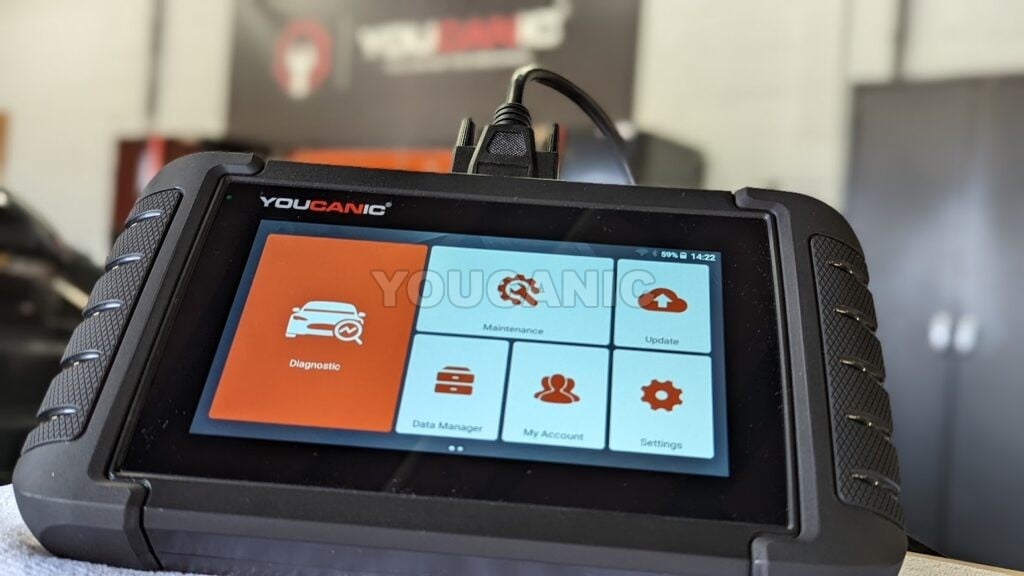
The YOUCANIC Full System Scanner can read and clear fault codes through every control module of your vehicle.
TPMS and Run-Flat Tires
Most new BMW cars have run-flat tires; an inoperable TPM system can be a safety issue. Depending on the type, cars with run-flat tires can drive up to 55 mph and 200 miles with underinflated tires. While conventional tires have soft sidewalls that deflate when unpressurized, a run-flat tire has a strong sidewall structure. However, as these tires can support the car’s weight and maintain their shape without air, drivers might not notice a punctured tire.
We hope you find the BMW TPM Malfunction TPMS Inactive guide helpful. Check these troubleshooting and repair guides for more help on your BMW.










Hi there,
I have a BMW 420 convertible (65 plate). I recently had the common problem of water sloshing around in the panels due to blocked drains. However, the car has also come up with RDC failure which is what prompted me to research the water sloshing sound.
BMW have cleared and modified the drains but are saying that the RDC failure has nothing to do with the water ingress.
Where is the RDC module and antennae located on these models and is it possible that water ingress in the boot, particularly in the rear right where there are a number of electrics can cause the problem?